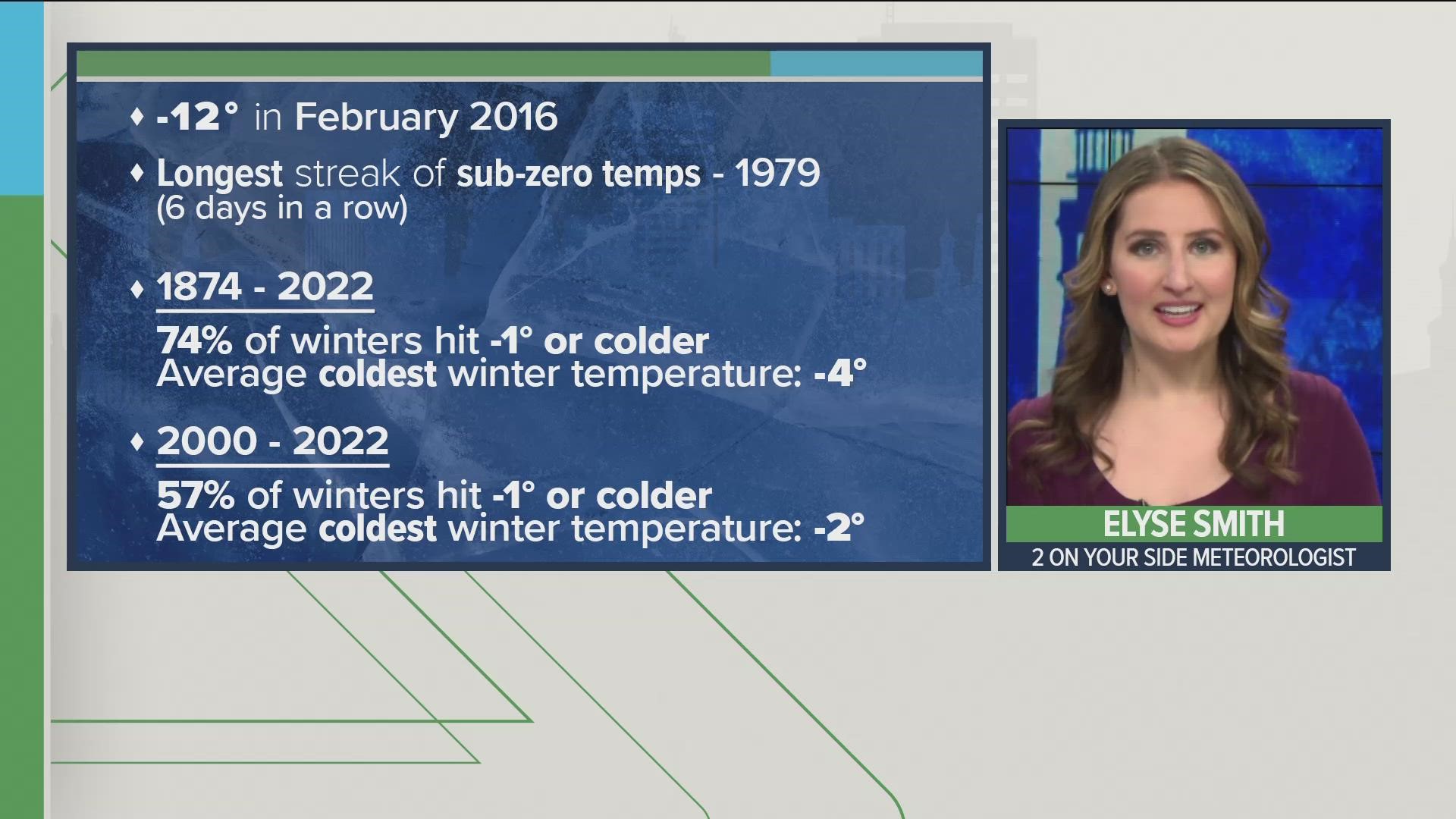BUFFALO, N.Y. — The La Niña impacting this winter in Buffalo developed all the way back in October of 2021. But for the first time since then, climate forecasts are picking up on a trend that could have this ongoing La Niña weaken and fade away by summer of 2023.
In an update released Thursday, forecasters with the Climate Prediction Center noted that the current La Niña continued to weaken throughout January, though La Niña conditions are still present.
But at this rate, these conditions could phase to ENSO neutral through the spring and early summer. This means that the La Niña that has persisted for now two Northern Hemisphere winters, 2021-2022 and 2022-2023, could finally end this spring or summer of 2023.
The weakening La Niña is mainly seen through a shallower depth and lack of cooler than average sea surface temperatures in the Equatorial Pacific Ocean, a staple feature of a La Niña. There is also a decrease in the typical sea-air winds that accompany a La Niña were confined to the central and western Pacific, not as widespread as before.
So generally, the more prominent features of a typical La Niña that were once more present across the Equatorial Pacific Ocean have started to slowly weaken or even fade in some cases. The current La Niña will likely last for the rest of the month, but could be gone by April or May.


The full transition to more ENSO neutral conditions in the Equatorial Pacific would mark the end of the current La Niña. And climate forecasters are highly convinced that is possible over the next few months. The result would be more seasonal ocean temperatures in the region of an El Niño or La Niña.
However, some long range climate models show a potential development of an El Niño over the summer. But that is far too early to tell for certain.
Back to Western New York, this is the third winter in a row where a La Niña has been present and influenced how weather patterns moved across the United States. This "third year La Niña" trend has only happened twice before in current history, with this now being the third.
Interestingly enough, this winter has so far followed closely to a previous third year La Niña winter: the winter of 2000-2001.
Storm Team 2 Meteorologist Elyse Smith discussed this in an "Ask Elyse" segment on the 2 On Your Side Town Hall last month.
El Niño Southern Oscillation (ENSO) is a large, naturally occurring ocean to atmosphere phenomenon located over the equatorial Pacific Ocean. It's positive phase is an El Niño and negative phase is a La Niña. And it's closely monitored year round as it can influence weather patterns across the Northern Hemisphere, especially during the fall, winter and even spring months.

